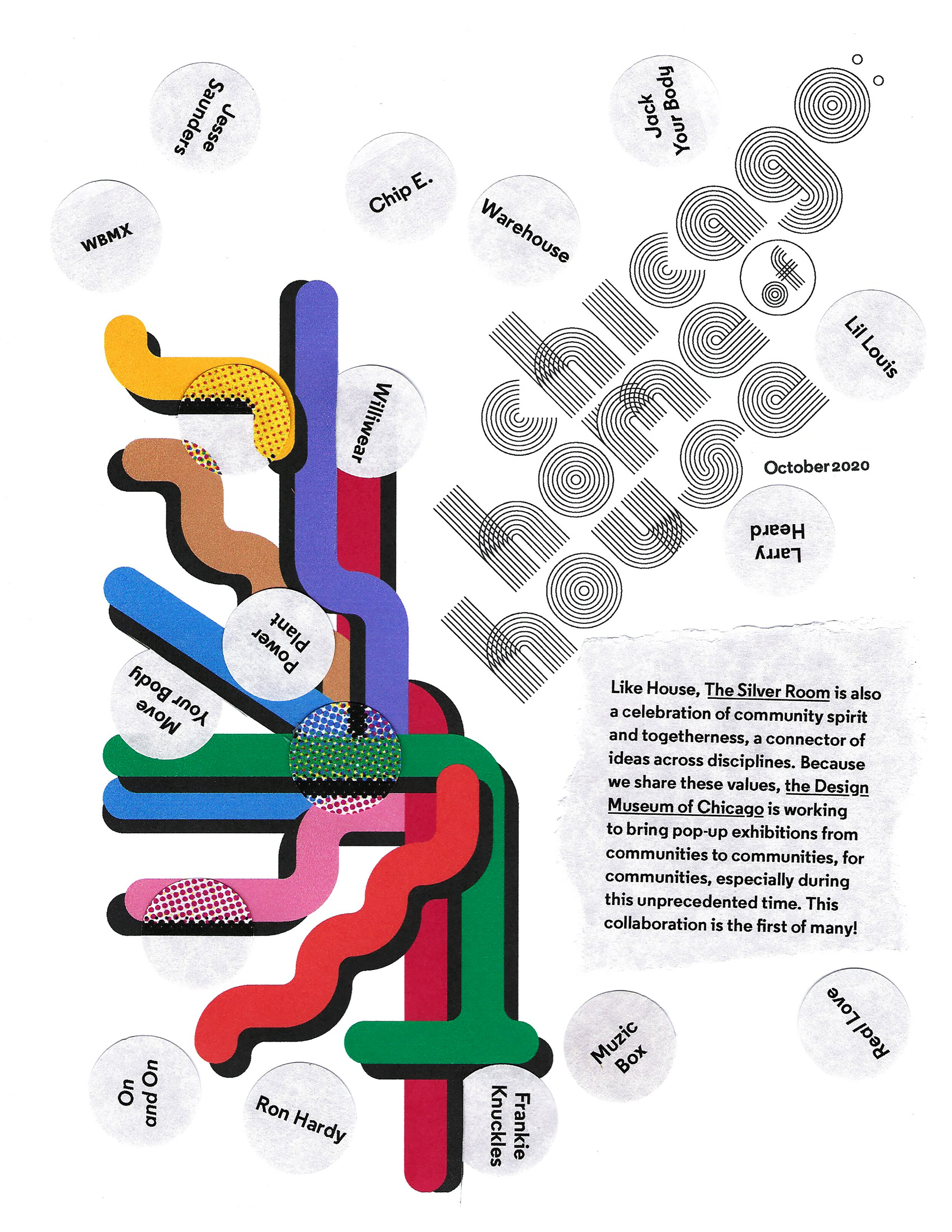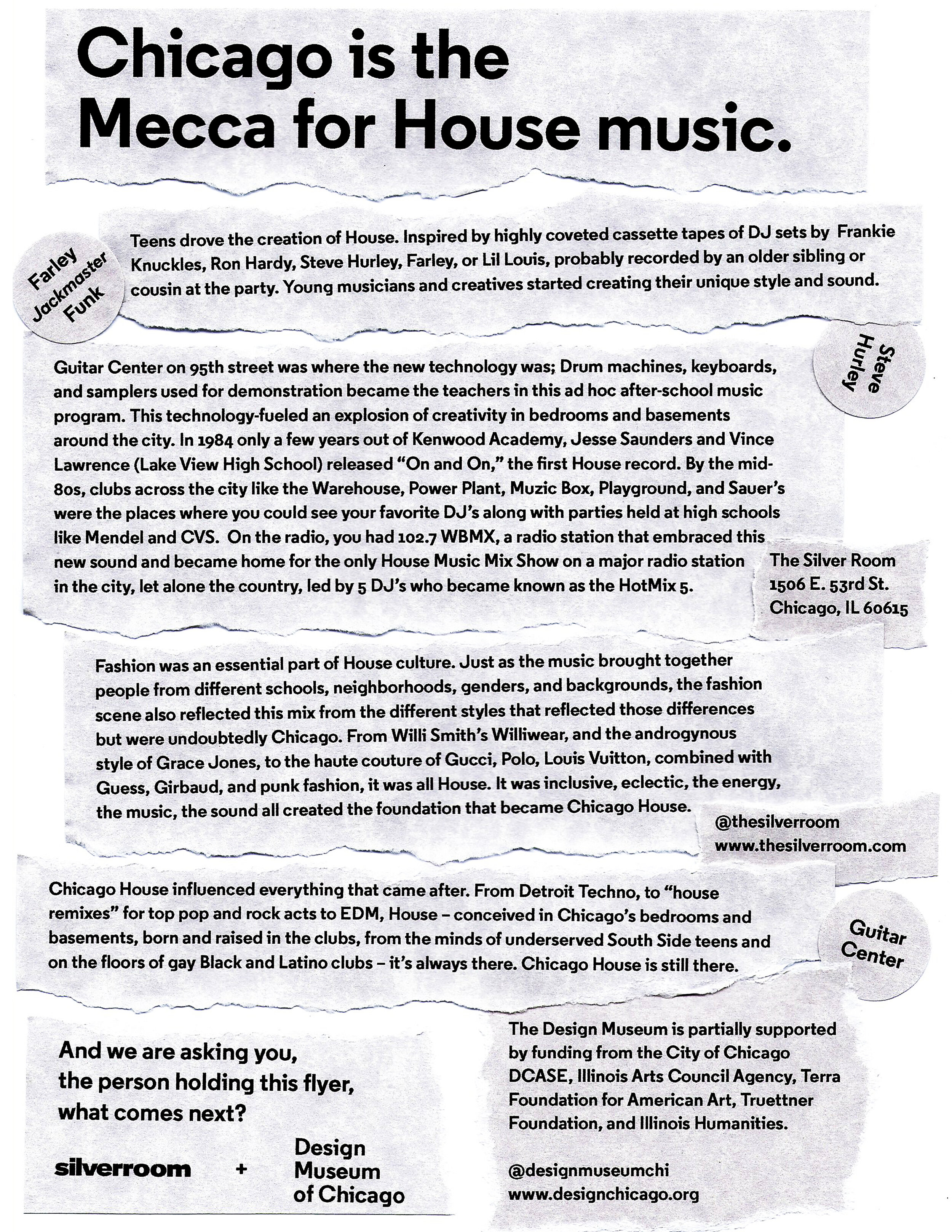Chicago: Home of House at The Silver Room
Chicago: Home of House at The Silver Room
The Design Museum started by popping up in unexpected places. Old warehouse, CTA cars, and vacant mall spaces all hosted exhibits and programming. There were benefit to this model – we were able to connect with many communities across the city and each was a bit of a spectacle because of their unique venue. But, pop-ups were also challenging. It was difficult to plan well in advance, environments weren’t always great for objects, and each time it was like we were starting from scratch.
Spring 2020 drew us back to the pop-up model. The Loop gallery was closed indefinitely due to COVID-19. People were staying closer to home, mostly in their neighborhoods. The conversations about justice and amplification of BIPOC voices were also thrust to the fore in Spring 2020 with the murders of George Floyd, Breonna Taylor, and Jacob Blake, among so many others. Museums were called to task for their role in maintaining racists systems, both internally and programmatically. We recognized these failures within ourselves.
Not sure where to start to do better, we began talking with people – some old friends, some new potential partners – about how we might start to bring content created by community members to where people were. Initially, we thought about putting content in windows of businesses that were shuttered due to COVID-19. But, as things worked out, the window of The Silver Room, a Chicago institution since 1997 and an intersection of art, community, and culture, was available in October 2020, and owner Eric Williams had an idea – House Music.
Willams connected us to Rob McKay, co-owner of Connect Gallery, who gave us a crash course in House history and provided the context and content for the store windows, drawn from his research for Move Your Body: The Evolution of House Music, an exhibition he co-curated at the Chicago Cultural Center in 2015.
Chicago is the mecca of House. Inspired by highly coveted cassette tapes of DJ sets by Frankie Knuckles, Ron Hardy, Steve Hurley, Farley, or Lil Louis, probably recorded by an older sibling or cousin at the party, teenage musicians started creating the unique House style and sound with new technology. The House fashion scene also reflected a mix of different styles that were undoubtedly Chicago. It was inclusive, eclectic, the energy, the music, the sound all created the foundation that became Chicago House which influenced everything that came after. From Detroit Techno to "house remixes" for top pop and rock acts to EDM, House – conceived in Chicago's bedrooms and basements, born and raised in the clubs, from the minds of underserved South Side teens and on the floors of gay Black and Latino clubs – Chicago is always there.
On view through October 2020, the hope was that the installation would encourage younger residents to learn more about the history of their neighborhood, and inspire them to greatness like the leaders of house did in the 1970s and 80s. It is also a public celebration of the living icons of House, many of whom still live in Hyde Park and travel past the storefront regularly. During installation, people walking past stopped and looked often, and The Silver Room staff reports that the window is generating great conversation and questions from patrons about House and its connections to the neighborhood.
While the content here may not focus explicitly on design, it utilizes design to build community, as well as to get people to stop and look. The museum’s role in this effort was to listen, follow the lead of the experts, and commit time and funds towards bringing thoughtful stories outside of the Loop.
What’s next?
We continue to think about how the Mini Museum idea can expand. Maybe it’s a similar model in other storefronts or windows around the city. Maybe it’s continuing to utilize design as a tool to get people to stop and see, or to provide a designed object that addresses a community concern. No matter what, it’s community-driven with the museum as an active listener and supporting the effort in ways that focus on other perspectives. Do you have an idea? Please let us know!









